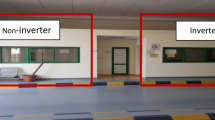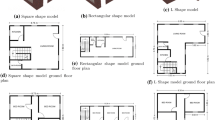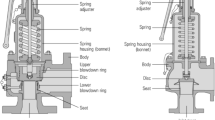Abstract
Various refrigerant flow patterns can produce a range of noise types according to their cycle conditions. Consequently, the identification of flow patterns in a tube is crucial to reducing refrigerant-induced noise. Because of the obstacles involved in identifying them accurately by experiment, in this paper, these flow patterns are estimated from the flow pattern map. Working from the assumption that the refrigerant-induced noise for an air conditioner in the heating mode comes from slug flow in the condenser-outlet pipe, the reduction of refrigerant-induced noise by avoiding slug flow in a tube is examined. To fully understand the conditions under which the refrigerant-induced noise occurs, cycle simulator equipment for an outdoor unit is developed. With this cycle simulator, noise tests of 4-way cassette type indoor units are performed under the conditions that the refrigerant-induced noise occurs. Increasing the mass flux in a tube by reducing the diameter of the condenser-outlet pipe can avoid slug flow, and the refrigerant-induced noise can therefore be reduced. The results of the cycle simulator can be verified with an outdoor unit 5HP system multi air conditioner and the results are well in line with simulator results.
Similar content being viewed by others
References
S. Hirakuni, Noise Reduction Technology Caused by Refrigerant Two-Phase Flow for Room Air-Conditioner, Japanese J. Multiphase Flow, 18(1) (2004) 23–30.
S. Hirakuni, Y. Smida and H. Yamamoto, Study of Noise Reduction of Refrigerant for Capillary Tube in the Refrigerator,” 32nd Conference Journal of Refrigeration and Air-Conditioning Association, 4 (1998) 22–24.
T. Umeda, Reduction of Noise Caused by Gas-Liquid Two-Phase Refrigerant Flow Through an Expansion Valve, JSME, 59(557) (1993) 243–248.
T. Kannon, Study on Noise Caused by Slug Flow through a Capillary Tube, JSME, 63(611) (1997) 2392–2397.
T. Umeda, Noise Caused by Gas-Liquid Two-Phase Flow with Single Large Gas Bubble through an Orifice (1st Report, Experimental Study Using Air-Water Two Phase Flow), JSME, 60(574) (1994) 56–63.
O. Baker, Design of Pipe Lines for Simultaneous Flow of Oil and Gas, Oil and Gas Journal, 53 (1954) 185–190.
P.B. Whalley, Two Phase Flow and Heat Transfer, Oxford University Press (1999).
D. Chisholm, Two-phase Flow in Pipelines and Heat Exchangers, George Godwin, London (1983).
M. Strasberg, Gas Bubbles as Source of Sound in Liquids, Journal of the Acoustic Society of America, 28(1) (1956) 20–27.
W. K. Minnaert, On musical air bubbles and the sound of running water, Phil. Mag. 16 (1933) 235–248.
H. S. Han, Aoyama, Shigeo, Analyzing for Refrigerant Induced Noise for Split Type Air Conditioner Indoor Unit, KSNVE, 16(3) (2006) 240–246.
Author information
Authors and Affiliations
Corresponding author
Additional information
This paper was recommended for publication in revised form by Associate Editor Yeon June Kang
Hyung-Suk Han received a B.S. degree in Production and Mechanical Engineering from Pusan National University in 1996. He then went on to receive his M.S. and Ph.D. degrees from Pusan National University in 1998 and 2007, respectively. Dr. Han is currently a Senior Researcher at Defense Agency of Technology and Quality, Pusan, Korea. He is currently serving as a Co-Researcher of Noise and Vibration Analysis Laboratory in Pusan National University. Dr. Han’s research interests are in the area of the mechanical applications of noise and vibration including refrigerant-induced noise.
Wei-Bong Jeong received a B.S. degree in Mechanical Engineering from Seoul National University in 1978. He then went on to receive his M.S. and Ph.D. degrees from KAIST in 1980 and from Tokyo Institute of Technology in 1990, respectively. Dr. Jeong is currently a Professor at the Mechanical Engineering at Pusan National University in Busan, Korea. He is currently serving as an Academic Director of the Korean Society for Noise and Vibration Engineering. Dr. Jeong’s research interests are in the area of the measurement and signal processing of noise and vibration, finite/boundary element programming of noise and vibration, fluid-structure interactions and acoustic-structure interactions.
Rights and permissions
About this article
Cite this article
Han, H.S., Jeong, W.B., Aoyama, S. et al. Experimental analysis for reducing refrigerant-induced noise of 4-way cassette type air conditioner. J Mech Sci Technol 23, 1456–1467 (2009). https://doi.org/10.1007/s12206-008-1128-8
Received:
Revised:
Accepted:
Published:
Issue Date:
DOI: https://doi.org/10.1007/s12206-008-1128-8




